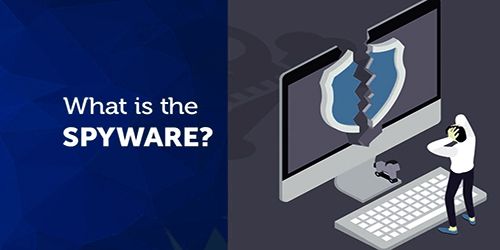The term spyware refers to a type of software that aims to steal personal organizational information. It can be installed as a secret component of real software packages or through traditional malware vectors such as fraudulent advertisements, websites, emails, instant messages as well as direct file-sharing connections. Unlike other types of malware, spyware is heavily used not only by criminal organizations but also by unscrupulous advertisers and organizations that use spyware to collect market data from users without their consent. Common activities Spyware edits include advertising, collecting personal information, and changing computer user configuration settings. Regardless of its source, the spyware is hidden from the user and is often difficult to detect, but may have symptoms such as degraded system performance and high frequency of unwanted behavior (pop-ups, browser homepage, search results, etc).
Spyware is one of the most common threats to Internet users. Once installed it monitors Internet activity, tracks login credentials and spies for sensitive information. The primary goal of spyware is usually to obtain credit card numbers, banking information, and passwords. Probably the biggest concern about spyware is that they have no idea about any mechanism or technology to find out how the user is capturing, transmitting, or not using any information, regardless of whether the presence is detectable. It can absorb CPU capacity, disk usage, and network traffic. Stability issues such as freezing applications, failure to boot, problems connecting to the Internet, and system crashes are also common. According to the Norton Cyber Security Insights Report Global Results, in 2017, a total of 978 million people in 20 countries were affected by cybercrime. One of the simplest and most popular, yet dangerous is Kilger. It is used to record keystrokes that can be fatal as it can record passwords, credit card information, etc. It is intentionally installed on some partner networks and corporate computers to track practical activity.
Types of spyware
Spyware secretly monitors and stores the online activities of its targets and also uses it to capture sensitive data. Spyware is not just one type of program. It is a complete category of malicious software including adware, keyboard logger, Trojan, and mobile data theft programs.
- Adware automatically displays ads when you browse the Internet or use ad-supported software. In 1999, when a popular freeware game called Elf Bowling was integrated with the tracking software, many Internet users first became acquainted with spyware. The adware is often flagged by antimalware programs as to whether the program in question is malicious.
- Keyloggers record all keystrokes made on the infected device and then store the data in an encrypted log file. Software keyloggers can be downloaded on purpose by anyone wishing to monitor activity on a particular computer, or they may unknowingly download and execute it as part of a rootkit or remote access Trojan (RAT).
- Trojans are usually malicious software programs that disguise as legitimate programs. After landing on a device, they search for sensitive information such as bank account information and pass it on to a third party who will use it to steal money, compromise accounts, or make fraudulent purchases.
- Mobile spyware is dangerous because it can be transmitted via Short Message Service (SMS) or Multimedia Messaging Service (MMS) text messages and usually does not require user interaction to execute commands. It was created to allow online shopping sites to give credit to websites that send traffic to their website pages. When a user visits one of these sites, the still ware intercepts the request and takes credit for sending the user there.
The best way to stay safe is to use good antivirus / antispyware software. More importantly, be careful when installing freeware applications by properly deleting the unnecessarily checked options by default.















